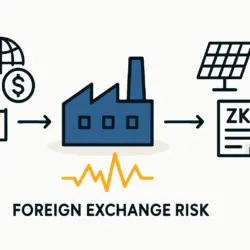In a significant move to bolster Zambia’s renewable energy sector, the African Development Bank (AfDB) has approved a $14.54 million loan to support the construction of the 33 MWp Serenje solar photovoltaic (PV) plant in the country’s Central Province. Developed by Ultra Green Corporation (UGC), this landmark project will be Zambia’s first private solar PV power plant and is expected to supply clean, reliable electricity to approximately 80,000 people.
A Strategic Zambia solar investment for Energy Future
This investment marks a crucial step in Zambia’s strategy to diversify its energy mix, which has historically been heavily reliant on hydropower and thus vulnerable to climate change-induced droughts. By boosting renewable energy capacity, the Serenje plant will contribute to grid stability and help alleviate the persistent electricity shortages that have impacted households and industries across the nation. This project is part of a larger national effort, as Zambia aims to install 8.5 million solar connections by 2030, significantly expanding energy access.
Project Details and Impact of Zambia solar investment
The 33 MWp plant will utilize solar photovoltaic technology to convert sunlight directly into electricity. The complex solar panel manufacturing process behind the panels for such large-scale projects involves multiple stages to ensure efficiency and durability. Beyond providing power to 80,000 people, the project is expected to generate significant economic and environmental benefits. Job creation is anticipated during both the construction and operational phases, and by generating clean energy, the plant will lower carbon emissions and support Zambia’s climate sustainability targets.
The African Development Bank’s Role in Zambia solar investment
The AfDB’s financial backing is critical for this project. The funding structure, likely a blended finance approach, helps de-risk the investment and restore confidence in Zambia’s power sector, paving the way for more private investment in renewables. This isn’t an isolated effort; the AfDB has consistently supported the country’s clean energy transition. The bank has also funded a 25MW Solar PV power plant in Zambia and is supporting feasibility studies for floating solar systems on Kariba Dam. These initiatives are key components of the significant Africa solar growth trend, which the AfDB actively champions to help close the continent’s infrastructure financing gap.
The Serenje solar plant represents more than just new infrastructure; it’s a milestone in Zambia’s journey toward energy independence, economic resilience, and a sustainable future. By attracting private sector participation and leveraging international financial support, Zambia is building a blueprint for renewable energy development in the region.
To learn more about the fundamentals of solar energy projects, from the basics of manufacturing to the final installation, consider exploring our free e-course.



